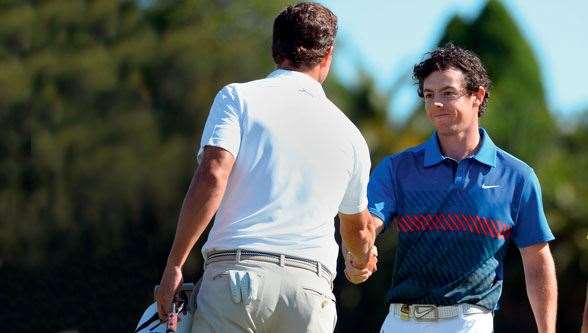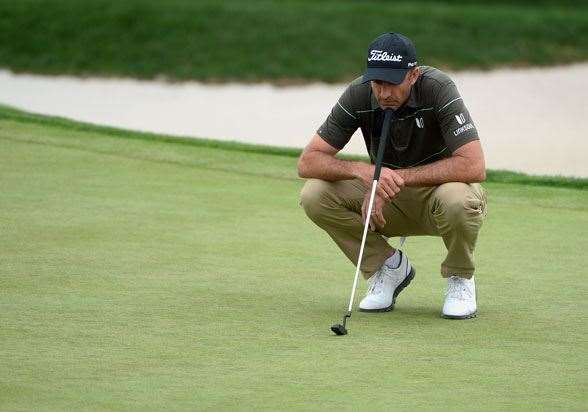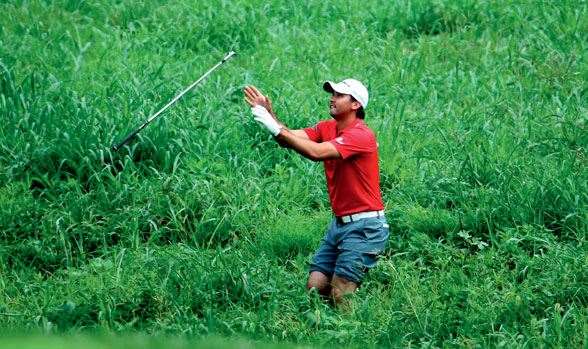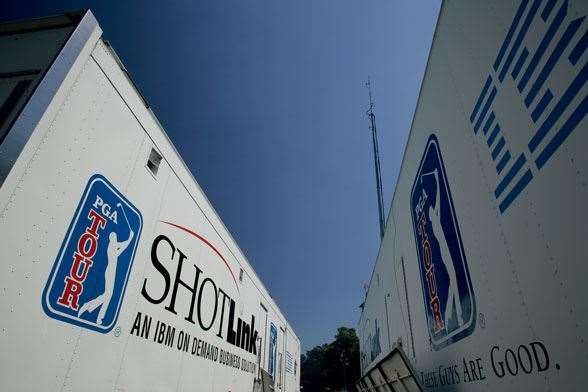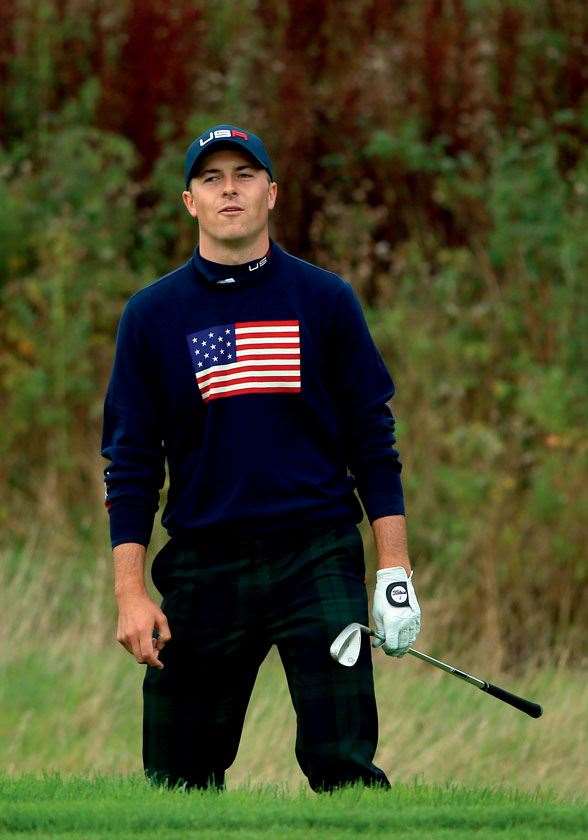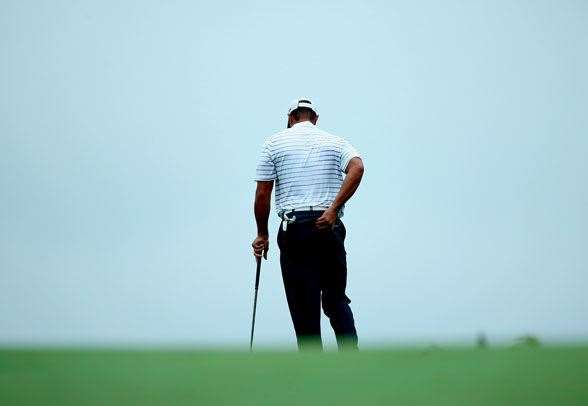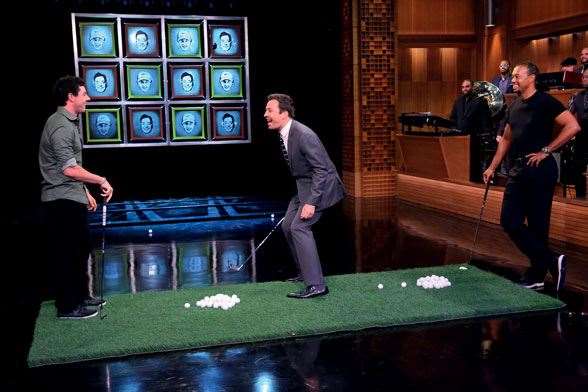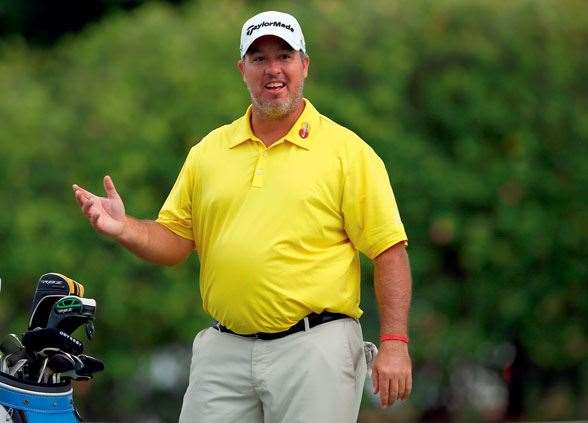Here's a half-dozen wonderings about golf's status quo.
Did Australia save Rory?
Consider the circumstances in early November 2013: dual Major champ Rory McIlroy arrives in Sydney in something of a funk. Golf’s next great player hasn’t won a tournament in 12 months, and has endured questions throughout that period about his big-money equipment deal, his on-course deportment, his national allegiance and his personal life. McIlroy has dipped to sixth in the rankings, behind the newly restored No.1, Tiger Woods, and an emboldened Adam Scott, who returns home the conquering hero of Augusta, the best-performed player in the Majors that year and has won the Australian PGA and Masters in the lead-up.
What followed was an Australian Open for the ages, even by the sneaky-historic standards of our national golf championship. If the last-round duel between McIlroy and Scott had occurred in a Major, it would already be talked about in reverential tones, or a gushing Jim Nantz voiceover. It was the supreme way to end a year of wonders for Aussie golf, and could have only been made better if Scott had taken the triple crown of his home events. No one, though, would begrudge McIlroy the win, particularly after the year he had.
Skip forward to the present, and the train of golf history is back on track. The precocious Northern Irishman is now a four-time Major winner and undisputed holder of the top spot in the rankings, way in front of No.2 Scott. When McIlroy turns up at Augusta next April as the favourite, he’ll be a green jacket away from becoming the sixth golfer to complete the career Grand Slam, at age 25 no less. His consistency, once a questionable spot in his resume, now approaches Tiger-like levels. Nobody blames his clubs anymore. He’s declared himself for Ireland and the chatter about a certain tennis-playing blonde is no longer relevant.
Curiously, or perhaps coincidentally, McIlroy began playing his best golf again after calling off his engagement (more curious still: Caroline Wozniacki’s results on the court also improved). And as the noted teacher and TV commentator Peter Kostis puts it, Rory’s top gear is simply unmatched by any other player in the game. With no impediments, a free-wheeling McIlroy will never be far off from winning the tournament.
In retrospect, his victory at Royal Sydney has the look of a turning point. This is difficult to discern with McIlroy, because he is in that class of sportsman who defies the form guide; he’s been known to play well, and sometimes even brilliantly, from out of nowhere. After winning in Australia, it would be another six months before he claimed another trophy, the European Tour’s BMW PGA event in England, which gave the impression in the US that he had a slow start to the year. However, when he accepted the US PGA Tour’s Player of The Year award in October, McIlroy said he felt he’d already turned it around at the beginning of the season, and just needed a tournament win to prove it to everybody.
The initial flush of dealing with the top rank was out of the way, and the mantle was resting easier, even though there was the matter of a legal dispute with his former management firm that was finally beginning in court. “I felt like I handled it pretty well in 2012,” he said. “There were a few things that went on last year that didn’t help, but yeah, I feel like I’m in a better position, obviously No.1 player in the world and everything that comes with that. I feel like I’ve held on to that title long enough now to know how to handle it and I’ve had a bit of experience at it now.
“I don’t go to tournaments thinking ‘I’m world No.1 – I need to perform like that’. I just go out to try to play as best I can.”
Beating his best is a damn hard thing to do. Australian golf prospered in the Greg Norman era because of the notion that, even if you don’t draw the best fields in the world, overcoming the best player in the game makes winning that event a world-class accomplishment. Having the world No.1 – particularly one off the back of a sparkling run – tee it up on our shores is something to be savoured. The nation may not have “saved” Rory McIlroy, but any gratitude he may feel is entirely welcome.
Dead solid … imperfect?
Geoff Ogilvy, in a remarkable piece for Golf Australia magazine mid-year, divined the complex nature of success and failure on the tour. “Expectations have risen to the point where I am ‘supposed’ to play well,” he wrote. “The more you’re in contention to win, the more comfortable you become in a stressful situation. The money is not an issue. And you don’t actually have to win any more. It’s perverse, really ... Conversely, the worse you play, the more you need to play well, which is the ultimate cruelty.”
Ogilvy’s words resonated because he remained mired in a form slump which had seen the 2006 US Open champion sink to 216th in the world. It had been a puzzling downturn for such a good player, but not altogether an uncommon or unprecedented sight in pro golf. As it would turn out, a few weeks after his column was published, Ogilvy claimed his first US win in four seasons, one of the tour’s smaller events in Nevada. He followed it with a runner-up in a big tournament, in Boston, and is now back in the top 100.
Moral of the story: the true nature of good and bad golf is elusive. It is perhaps telling that when the game had to contrive a measure of how a golfer was doing out on the course, it reached for a term associated with an imaginary monster – the bogeyman. In golf, success and failure can seem similarly mysterious, fantastical or plain haunting.
Consider, then, the year of the Australian contingent at the top level. Not since the banner season of 2006 have the Aussies run so well: six different winners of PGA Tour titles, led by Jason Day’s triumph at the WGC-Accenture Match Play Championship in Arizona last February, and first-time wins for Steven Bowditch and Matt Jones; some terrific-if-winless campaigns from the likes of Marc Leishman and Stuart Appleby; the ascension of Scott to No.1, the high point of a supremely consistent campaign in which he finished outside the top-25 in a tournament only once.
This is what a solid year looks like. But for a golfing public treated to the epic quality of the 2013 Masters, the potential for a letdown was always high. For all of Scott’s high finishes, he didn’t really contend at any of the Majors. Nor did the other Aussies, with the sole possible exception of Day going out with McIlroy in the final group on the Saturday of the PGA. Day’s shoeless par save on Valhalla’s second hole will probably turn out to be the most lasting memory for Australia at the Majors in 2014.
Majors, it bears remembering, are tough to win. It’s even tougher with a Woods or a McIlroy in peak form hoarding a share of them. In the euphoria of Scott’s breakthrough, it was tempting to believe that this could become a regular occurrence, as it was in the late 1980s and early ’90s. The more recent record deals out a harsher set of expectations – if the pattern holds, the next Major win by an Australian will take another decade.
The game does reward patience, and if we needed a reminder of that, it came in the form of perhaps the best news that Australian golf received this year – David Graham finally receiving the call to the World Golf Hall of Fame. The two-time Major champion, who played one of championship golf’s greatest closing rounds to win the ’81 US Open, was a gracious inductee: “Good things are worth waiting for.” Wise words, but one not in keeping with a culture on the lookout for ...
The next top golfer
Another of the high-profile visitors this summer is Jordan Spieth. The young man from Dallas embodies the precocity sweeping through golf these days. He made a cut on the PGA Tour at 16, then did it again a year later. As a rookie pro at 19, he became the youngest player to win a PGA Tour event in more than 80 years. Earlier this year, he held the lead during the fourth round at Augusta, but fell short of a victory that would’ve surpassed Woods’ mark for youngest Masters winner.
It wasn’t lost on anybody that there was a new star in the making. As American golf muddles through this phase of Tiger’s career, the desire for a new leading man to emerge is palpable. And Spieth looks the part – squeakily clean-cut, the right kind of confident, and tapping a classic Texas vibe that reaches back into a lineage of Crenshaw and Kite, Hogan and Nelson.
However, Spieth’s game is not a product. Unlike so many of his contemporaries, cut from the same technical cloth of a highly organised junior golf regime, Spieth has more than a few idiosyncrasies that mark him out. His coach since he was 12, an expat Australian named Cameron McCormick, developed a natural way of swinging the club that they continue to refine. As anyone who watched a lot of the Masters would be aware, Spieth has a safe-cracker’s touch on and around the greens. But his best quality, according to his mentors, is a level of maturity that defies his birth certificate.
It’s an attribute that will set up a golfer for quick success on tour. But whether it’s enough to deal with the pressures of trying to stay atop the game is another question – after playing some of the best golf on the US side through the first two days of the Ryder Cup, Spieth noticeably frayed in the critical first singles match against Graeme McDowell. And while he piled up more than $4 million on the PGA Tour this year, he did it without a win, and showed some shakiness when under the gun. Another worry: Spieth doesn’t play the kind of power golf that today’s No.1 needs to have in his bag.
But perhaps the biggest concern for Spieth’s future prospects is expectations management. The achievements of Woods and McIlroy before they turned 25 have rarely been matched in golf history. At 21, Spieth is already on the clock. And if trying to keep up with the guys ahead of him isn’t enough, there’s another wave of precocious kids rolling in right behind him, ready to seize the buzz. This might seem altogether unfair on the bright young things, but try to keep that in mind when watching the prodigious talent of 16-year-old Victorian prospect Ryan Ruffels, the son of former tennis star Ray, particularly if he’s near the top of the board in one of our big tournaments.
No pictures on a scorecard
Maybe we’ve just looked at golf the wrong way all this time. For a game that purports to be rigorously objective, reducible to numbers on a card, golf has accumulated a huge body of folklore. Statistics have long been secondary to the usual parables and proverbs that golfers have depended on to make sense of matters. Example: “drive for show, putt for dough”.
But the analytics revolution that has swept through sports was inevitably going to come to golf, particularly with the advent of the PGA Tour’s ShotLink, a laser tracking system that records every shot in tournament play. This data, along with some smart theorising, is producing some interesting new ways to see the game.
One of the leading figures in this area is Mark Broadie, a Columbia University business professor. He’s best known within golf for developing the PGA Tour’s putting stat, and spoke at the PGA of Australia’s coaching conference last September. Instead of golf’s common counting stats – fairways hit, greens in regulation, number of putts – Broadie introduced a paradigm he termed “strokes gained”.
The crux of the idea: each stroke counts the same, but they are not created equal. Make a putt from 30cm and you’ve done something that was expected; hole one from 30m and you have “gained” on the average performance of the rest of the field. As distance is the main factor in putting conversion (the stat is being refined to incorporate things like slopes and other conditions), ShotLink found that the tour average from ten metres was two putts. A one-putt from ten metres gains a stroke on the field; make one from about 2.5m, and you gain a half-stroke.
Broadie has since turned the lens of strokes-gained from the greens to the rest of the course, and has come up with an interesting finding – putting really isn’t how you get the dough on tour. When looking at where the best golfers establish their edge on the competitors, 44 percent of their gains come from approach shots beyond 100m. Putting, by contrast, accounted for a mere 15 percent. As a case study, there’s Aaron Baddeley: second on tour in putting, 170th in tee-to-green, money list 103rd.
Ball-striking supremacists rejoice. If the research seems counter-intuitive, it stems from the fact that every time we see a tournament winner, they’ve been making putts that week. Through the Tiger era, we watched a guy seemingly make everything on the greens. And while Woods was the third-best putter statistically on the PGA Tour between 2004 and 2012, he was also far and away the best on tour with his approaches, a massive half-shot gained better per round.
The numbers collected in golf do a pretty good job of explaining what’s past in the Tiger era. Where it currently stands, though, we’re back to telling stories.
Whither the era?
It’s something of a sad commentary that perhaps the significant turning point in golf history this year didn’t occur on the course, but on The Tonight Show Starring Jimmy Fallon. Tiger and Rory were doing a spot of promotional duty on late-night TV, but it turned out to be an exercise in what political professionals call “optics” – there was Woods, unable to play golf because of injury, forced to watch the winner of the last two Majors ham it up with Fallon in an on-air chipping contest. It was harmless fun, but there was no denying the generational baton-passing going on, retransmitted by viral video.
He won’t be here, but the 14-time Major winner and still the biggest name in golf returns to action this month at his year-end event, which has been moved to Florida. Woods still looms large over the game, particularly in its contact with the mainstream. But the raw facts describe a golfer who played only eight tournaments this year, has a bad back, has split from his third coach and is chasing a younger champion who is doing the kind of things to his fellow pros that Woods used to.
We got a good look this year at the outlines of a post-Tiger landscape. Many within golf have already moved on, eager to seek out fresh narrative. In a rather pointed rebuke, it was reported that the cash-flush tournaments of the Gulf, which Woods has frequented since his first days as a pro, will no longer pay him appearance fees. According to Forbes, Woods was displaced by basketball star LeBron James as the most valuable athlete brand in the world, a position Tiger had held for the last seven years.
The man who could sell anything – what was he selling in those Accenture ads anyway? – is now attaching his name to a casual dining restaurant in his hometown in Florida. His first foray into golf course design, El Cardonal in Mexico, will soon open, having seen three previous projects fall over. It has the unmistakable look of the kinds of things that ex-sports stars lend their name to.
Woods would be the first to say that he is far from done. He turns 39 at the end of December, and in golf years, it’s probably the oldest 39 that’s ever been. Jack Nicklaus’ landmark 18 Majors are still hanging out there, and if Woods’ career has been defined by the Golden Bear’s winning pace, he’s behind again for the first time since he won majestically across the links of St Andrews as a 24-year-old. (For those wondering, McIlroy’s fourth major at 25 puts him only 16 days behind the age that Nicklaus won his fourth.)
The presumption with Woods’ chase was that he had time on his side. But as more than a few observers have pointed out, Nicklaus won only one Major after age 41. Only 18 Majors total since the Masters began in 1930 have been won by players 41 and over, and no one won more than two. Tiger made a career out of defying golfing precedent, but the task required – to become the greatest Major winner in his 40s – might be beyond him.
In several golf publications recently, there have been Tiger retrospectives tied to him reaching the 20-year mark as a pro. They give the profound sense of the passage of time, but also raise the future question of how Woods will grow into an old golfer. Because that’s what great golfers do – age before us, stay connected to the game, provide a living link to the past for a sport that values its heritage. They don’t retire as other athletes do. There are various guises they assume: an elder statesman in the mould of Nicklaus, a perpetual player like Tom Watson, perhaps a branched-out tycoon like Greg Norman, who will be very interesting as he attempts to reinvent himself next year as a television commentator.
It must be noted that each of these legends made serious runs at Major victories in their 50s. It is the type of feat we might yet see from Woods one day, and when it comes, no matter how you feel about him, it will be rousing. Woods’ former coach, Hank Haney, thought that Tiger would walk away if he reached the record. In his manic competitiveness, you could see him continuing to grind away as long as the target was in front of him. Tiger may yet again play good, or even great, golf. But any notion it’s still his era is decidedly over.
Post script: Boo
Boo Weekley, one could safely assume, cares not for eras. The tour’s blue-collar hero, who famously once cleaned chemical tanks for a living, has more than once said that his goal in golf was to make enough money in five to ten years and then quit.
Weekley just finished his eighth tour season, so it’s probably a good thing that he’s sneaking in this trip to the Gold Coast for the Australian PGA, before he disappears to his fishing holes. Those who bemoan the lack of characters in modern golf can’t get enough Boo. He owns the best tour pro anecdote of recent times, the story of how, at a county fair sideshow, he tried to land a punch on an orang-utan to win $50. Weekley said he circled the orang-utan, who was half his size, then faked with his right. The next thing Boo remembered was waking up, bleeding, in the back of his friend’s pickup.
Character. You never can be quite sure about Weekley and the apocryphal (he also tells a ripping yarn about once losing his keys in a portaloo), and he certainly plays up the redneck angle for effect. The tall tales also tend to obscure his ability as a golfer – he’s a dope ball-striker, 18th on tour in strokes-gained tee-to-green.
Truly, a prime opportunity has been missed with Boo. The US Ryder Cup team is undergoing a review of the Tom Watson-led mess in Scotland, which saw Phil Mickelson give voice to a near-mutiny by the players against their captain. The PGA of America put together an 11-member task force, including veterans like Woods and Mickelson, to examine the US’ problems in the Cup, having lost eight of the last ten against the Euros. What the Americans, who often appear wound way too tight at the matches, could really use is the input of a man who “rode” his driver rodeo-style at their only Cup victory in the last 15 years. The task force needed Boo.
So do the rest of us who follow golf. Weekley is fun to watch because he doesn’t seem to take things too seriously out there. If you have a chance to see him play this summer, do it. If nothing else, it’ll be the only acceptable time to boo at the golf.
Related Articles

Feature Story: Moving the Needle

The Aussies at The Open

